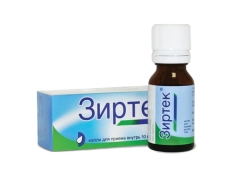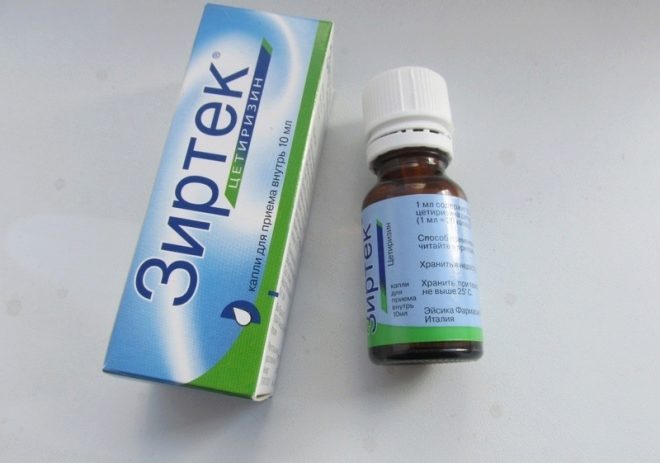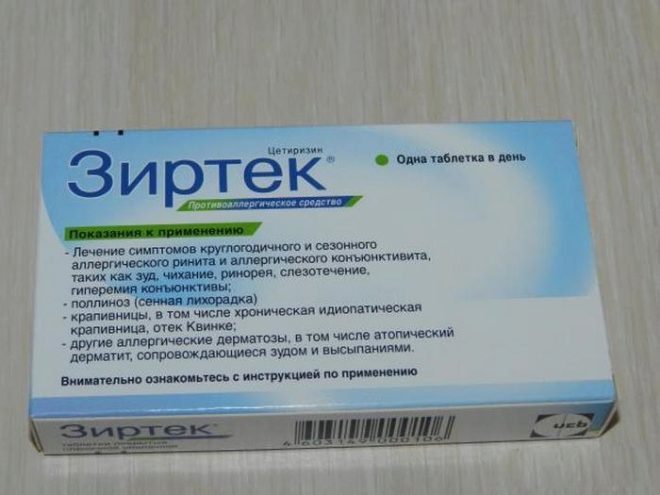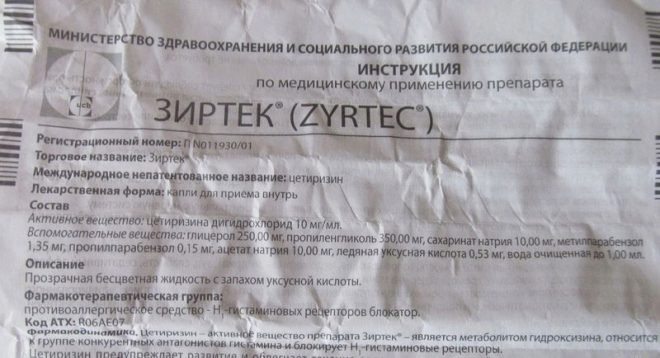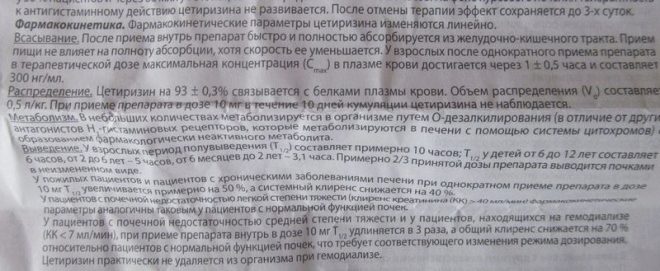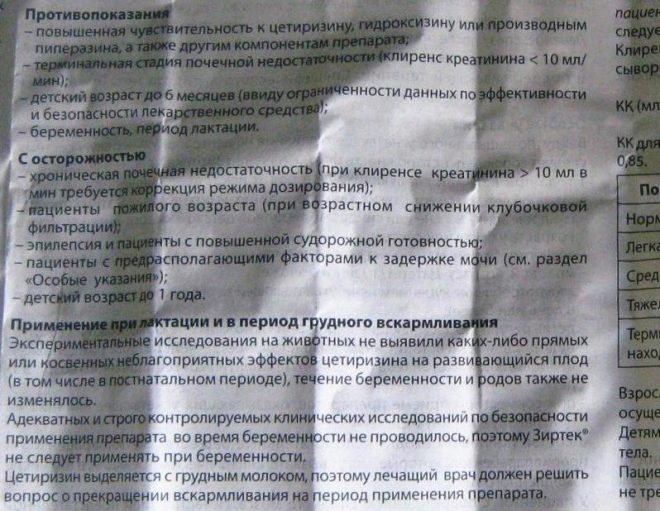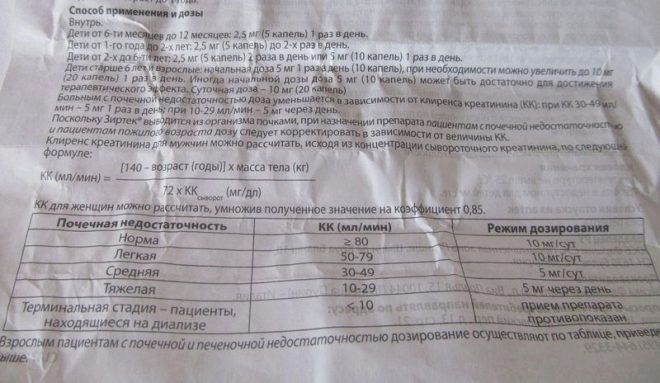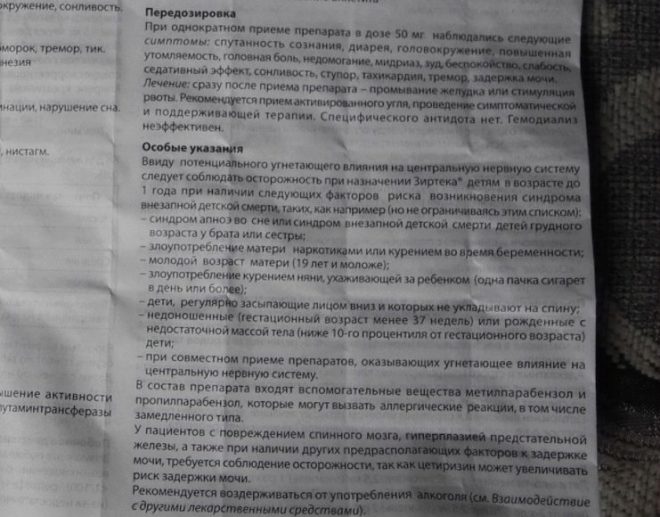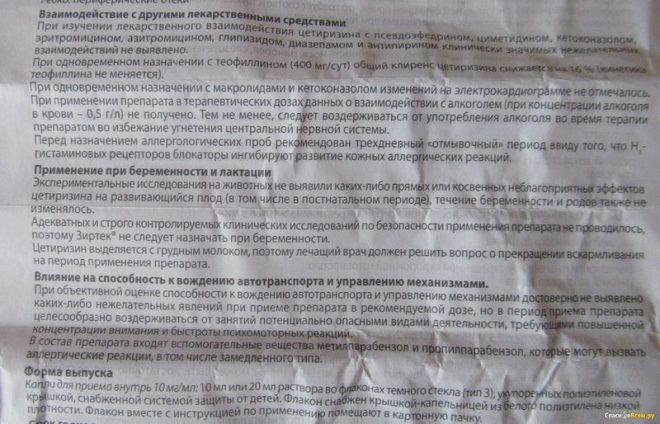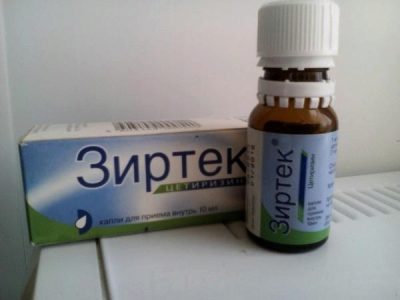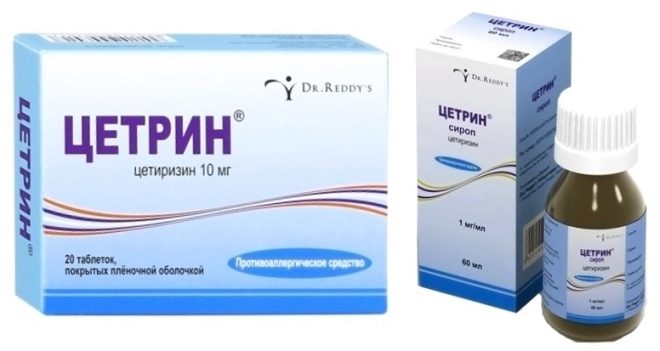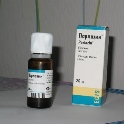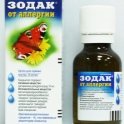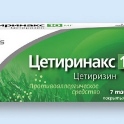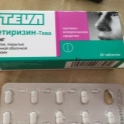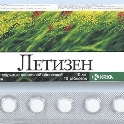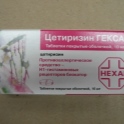Drops "Zyrtec" for children: instructions for use
Nowadays, effective second-generation antihistamines are used in the treatment of allergies in children. These drugs include Zyrtec. One form of this medication is drops, which are ingested. Is it possible to give them to children from birth, and what features of the drug should be considered when using in childhood?
Release form
Zyrtec drops are a colorless liquid that smells like acetic acid. The drug is clear and does not contain any suspensions. It is sold in dark glass bottles with a polyethylene lid (dropper). On the lid there is an image of how to open the drops correctly. In one bottle may contain 10 or 20 ml of the drug.
In addition to drops, the drug is released in tablets that have a white film coating. Other forms, such as syrup or ampoules for injections, are not made.
Composition
Cetirizine is the main ingredient, due to which the drops have antiallergic action. It is represented by dihydrochloride and contained in one milliliter of the drug in the amount of 10 mg. Additionally, the drug includes propylene glycol, purified water and propyl parabenzene, as well as methyl parabenzene. There is also acetic acid, Na acetate, glycerol and Na saccharinate in such a liquid.
Operating principle
Cetirizine in droplets affects histamine-sensitive receptors (H1 receptors). Owing to their blocking, the medicine helps with an allergic reaction at the earliest stage of its development, facilitating the course of the allergy, relieving swelling and itching. In addition, the drug is able to prevent the occurrence of a reaction to an allergen.
Acceptance of such drops in patients with the “late” stage of allergy also has a therapeutic effect, since cetirizine is able to:
- Inhibit the release of inflammatory mediators.
- Reduce capillary permeability.
- Prevent the movement of blood cells such as basophils, neutrophils and eosinophils.
- Stabilize the membrane of mast cells.
- Eliminate smooth muscle spasm.
- Prevent the development of cooling allergies.
In mild asthma, drops of cetirizine help to get rid of bronchoconstriction. At the same time, in the dosage recommended by the instruction, the drug does not provoke a sedative effect. The effect after taking the drops begins to appear after 20-60 minutes and lasts longer than a day. When the medication is canceled, its effect lasts up to three days.
Indications
The drug is in demand for:
- Seasonal or perennial allergic rhinitis, manifested by nasal discharge, sneezing, itching in the nose, nasal congestion.
- Allergic conjunctivitisThe symptoms of which are conjunctival redness, itching sensation in the eyes and tearing.
- Food allergies.
- Hay fever
- Hives.
- Atopic dermatitis and other allergic dermatoses, manifested by rash and itching.
- Allergic cough.
- Drug allergies.
At what age is it allowed to take?
Zyrtec in drops is not recommended for use in the treatment of children under 6 months, because the safety and efficacy of such a drug in infants of this age has not been proven. Children under one year of medication prescribed with cautionbecause it inhibits the central nervous system.
Especially carefully you need to give drops, if the child is detected apnea in the dream, the mother’s age is less than 19 years old, the pregnant woman abused smoking, the baby was born prematurely or takes other medicines with a depressing effect on the nervous system.
Contraindications
Treatment with drops is not recommended if:
- The child has intolerance to cetirizine or other ingredients of the solution.
- Analyzes have shown a serious renal failure in a small patient.
The use of the drug should also be cautious with epilepsy, the risk of urinary retention and increased convulsive readiness.
Side effects
Taking drops can provoke the appearance of:
- Headaches.
- Dry mouth.
- Drowsiness.
- Ailments and weaknesses.
- Excited state.
- Stomach ache.
- Dizziness.
- Nausea
- Fatigue.
- Paresthesia.
- Liquid stool.
- Runny nose
- Pharyngitis
- Rash on the skin.
In rare cases, the treatment of symptoms such as allergies, convulsions, aggression, swelling, hallucinations, sleep problems, amnesia, tachycardia, weight gain, increased activity of liver enzymes. Extremely rarely, the drug causes an anaphylactic reaction, fainting, taste disturbances, tremor, vision problems, impaired urine output, a decrease in platelet levels, angioedema.
Instructions for use
Mode of application
- The drug can be dripped into a spoon and immediately swallowed in an undiluted form or drink diluted in water. When breeding take such a volume of water that the child can immediately swallow. As soon as the drops are diluted with water, they should be immediately drunk. Storage in diluted form is not recommended.
- The absorption of cetirizine under the influence of food slows down a little, so it is best to take the drug either an hour after a meal or before a meal for 1 hour.
- For the treatment of infants, it is permissible to mix the drug with a mixture or female milk. In this case, the medication is given before feeding.
- What will be the duration of treatment with drops, determined individually, depending on the manifestations of allergy and the patient's response to therapy. Often the medication is prescribed for 7-10 days. An addiction to such a remedy does not develop, but if it is necessary to give it for a long time, drops are prescribed in courses for 3 weeks with a break of 1 week.
Dosage
- A single dose of the drug for a child from 6 months to 6 years is 5 drops, which corresponds to 2.5 mg cetirizine.
- Children younger than a year, the drug is given only once a day.
- At the age of 1 year to 2 years, it is permissible to take the remedy either 1 or 2 times a day.
- A 2-6 year old child is prescribed a medicine twice or increases a single dose up to 10 drops (5 mg cetirizine) and is given once a day.
- If the child is 6 years old, the therapy begins with a dosage of 10 drops per reception and often this is enough to obtain a therapeutic effect. If the effect of the drug is weak, the dose can be doubled and give 20 drops to a small patient once a day. This amount of medication is the maximum daily dosage. In addition, at 6 years of age and older, you can replace the drops with a tablet form of the drug.
- In case of kidney failure, it is necessary to find out the weight of the child and determine the clearance of creatinine, and then adjust the dose.
Overdose
An excessively high dose of drops provokes dizziness, a feeling of weakness, anxiety, drowsiness, headache, fatigue, loose stools, rapid pulse, confusion, trembling of limbs, urinary retention and other negative symptoms. Immediately after an overdose, it is recommended to provoke vomiting or flush the stomach, and then give the child activated charcoal and prescribe a supportive treatment.
Interaction with other drugs
Drops containing cetirizine can be used along with many other medicines, including ketoconazole, azithromycin, diazepam, cimetidine and other drugs, as mentioned in the annotation to the drug.
Terms of sale
Zyrtec in the form of drops can be purchased at a pharmacy without a prescription. The average price of 10 ml of the drug varies from 300 to 400 rubles.
Storage conditions
The bottle with drops must be kept in a place where a small child cannot reach. The optimum storage temperature is up to 25 degrees Celsius. The shelf life of the drug is 5 years.
Reviews
Many parents respond well to the use of Zyrtec in their children, saying that this medicine has a good and lasting effect, helping with allergies. The advantages of the drug is also called the absence of dyes in the composition and ease of dosing.
The disadvantages of funds include its high cost, unpleasant taste and the appearance of negative side reactions. According to reviews of moms, the most frequent of them are diarrhea, fatigue, drowsiness and runny nose.
Analogs
Other drugs based on cetirizine can be used as a replacement for Zyrtec:
- Parlazin. Such drops are prescribed to children older than a year, and the tablet form is prescribed from the age of six.
- Zodak. The medicine comes in drops (used in children over 1 year old) and tablets (prescribed for children over 6 years old). Zodak is also produced in the form of banana syrup, prescribed for children 2 years and older.
- Tsetrin. This medicine is represented by drops and fruit syrup, as well as tablets in the shell. In drops, it is used from 6 months, syrup is prescribed from 2 years of age, and the tablet form is intended for children over six years old.
- Cetirinax. This medicine is prescribed in tablets for children with allergies aged 6 years and older.
- Cetirizine Hexal. This tool is made in drops (used from 1 year) and tablets (prescribed from 6 years of age).
- Letizen. This medicine, produced in tablets, has been used in pediatrics since the age of six.
- Cetirizin-Teva. This tableted antiallergic drug is prescribed to patients older than 6 years.
In addition, the doctor may prescribe other alternatives that are effective for allergies, such as Fenistil, Suprastin, TavegilLordaestin Claritin and other drugs.
See the transfer of children's doctor E.O. Komarovsky, from which you will learn what anti-allergy drugs your child can use.
